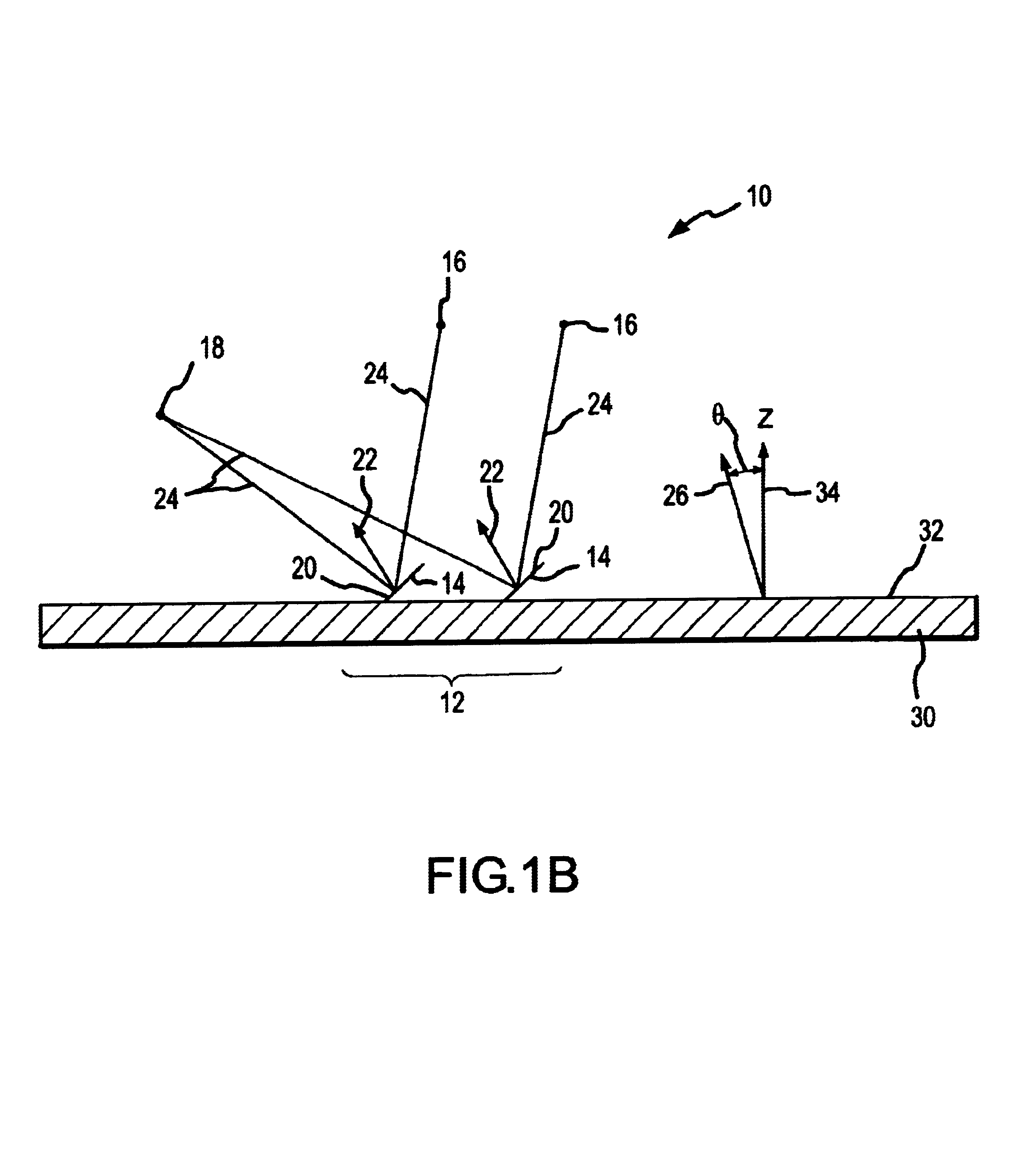Off axis optical signal redirection architectures
a technology of optical signal redirection and optical path length, applied in optics, instruments, optical light guides, etc., can solve the problems of limited bandwidth and switching speed capabilities of oeo switches, and achieve the effects of reducing path length, reducing optical path length, and reducing effective packing density
- Summary
- Abstract
- Description
- Claims
- Application Information
AI Technical Summary
Benefits of technology
Problems solved by technology
Method used
Image
Examples
Embodiment Construction
[0035]Referring now to FIGS. 1A-C, there are shown several examples of off axis optical signal redirection systems 10. The optical signal redirection systems 10 shown include one reflective microstructure array 12 formed on a single substrate 30. However, in other embodiments, there may be two or more reflective microstructure arrays 12 formed on one, two or more substrates 30. Each reflective microstructure array 12 includes one or more reflective microstructures 14. Each of the reflective microstructures 14 includes an optically reflective surface 20 and is positionable with respect to the substrate 30 in order to orient its reflective surface 20 for redirecting optical signals 24 incoming from one or more originating locations 16 to one or more target locations 18. It will be appreciated that, depending upon the direction of propagation of the optical signals 24, an originating location 16 may be a target location 18 and a target location 18 may be an originating location 16. For...
PUM
 Login to View More
Login to View More Abstract
Description
Claims
Application Information
 Login to View More
Login to View More - R&D
- Intellectual Property
- Life Sciences
- Materials
- Tech Scout
- Unparalleled Data Quality
- Higher Quality Content
- 60% Fewer Hallucinations
Browse by: Latest US Patents, China's latest patents, Technical Efficacy Thesaurus, Application Domain, Technology Topic, Popular Technical Reports.
© 2025 PatSnap. All rights reserved.Legal|Privacy policy|Modern Slavery Act Transparency Statement|Sitemap|About US| Contact US: help@patsnap.com



